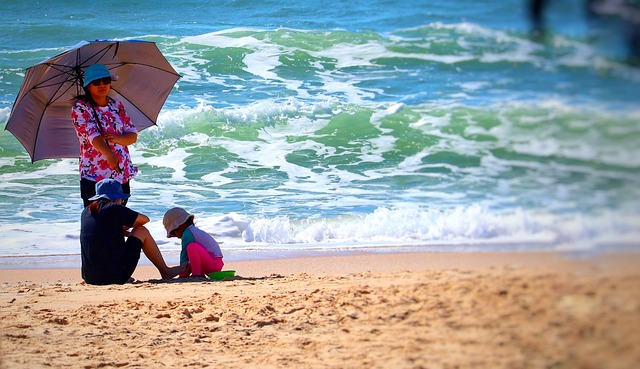Skin cancer is the most common type of cancer in the United States. The American Academy of Dermatology says that one in five Americans will develop skin cancer in their lifetime. They estimate that about 9,500 people in the United States are diagnosed with skin cancer each day. Skin cancer rates in the United States have doubled in the past 30 years.
Sunburns and tanning beds are a major cause of skin cancer and melanomas. However, there are three simple steps you can take that will greatly reduce your risk of developing them.
- Use an effective sunscreen.
- Cover your skin and stay in the shade when the sun's rays are strong.
- Check your skin regularly for signs of change.
1. Apply an effective sunscreen
Sunscreen creams and sprays provide protection from both UVA and UVB rays. Both UVA and UVB rays cause long-term damage to the skin. This includes aging of the epidermis and dermis, as well as skin cancers and cancers. Sun protection products are given an SPF rating and a star score. It must be clearly displayed on the packaging.
SPF ratings are related to ultraviolet B (UVB) rays. They are short rays that penetrate the upper layers of the skin and cause a burning sensation. The SPF number indicates how long you can stay in the sun if your skin is covered with this sunscreen. Depending on how fresh, unprotected your skin is, it can start to burn after just 10-15 minutes of sun exposure. The higher the SP number, the longer you will be in the sun before your skin is affected by UVB rays. Both the American Academy of Dermatology and the NHS recommend using a sunscreen of at least SPF 30.
Star ratings (from 1 to 5 stars) indicate the level of protection against ultraviolet A (UVA) radiation. UVA penetrates the deeper layers of your skin. The damage it causes is less visible, but more serious and long-term than that of UV rays. The higher the star rating, the better and most experts recommend a minimum of 4 stars.
I recommend this broad spectrum sunscreen. It's a spray and easy to apply. It contains SPF 46, and is great for kids and adults alike. I also love the fact that it's unscented, so it's perfect for my sensitive skin.
What is broad spectrum sunscreen? This is a cream or spray that protects your skin from UVA and UVB rays. Both types of UV rays cause skin damage that can lead to cancer.
2. Cover your skin and stay in the shade
I love to see the sun, but I also want to live a long time! To reduce your risk of skin cancer, follow these simple tips.
- Get out of the midday heat when the sun's rays are at their strongest.
- Cover up the sun with long sleeves, long pants, sunglasses, and floppy, wide-brimmed hats.
- Apply sunscreen and reapply it every two hours.
How to use sunscreen effectively
2. Reapply after swimming, washing or drying the skin.
3. Use enough sun cream! Put at least 1 teaspoon on each arm, every part of your body needs at least 1 teaspoon.
4. Ask a family member to put sunscreen on the areas you can't reach.
5. Check your skin regularly for signs of change.
The number of people being diagnosed with melanomas and skin cancers is increasing. Skin cancer is now the most common type of cancer in many countries. However, if caught early enough, it is also one of the most treatable. If you notice any changes in the texture or appearance of your skin, don't take any chances and consult a medical professional without delay.
Why are skin cancer rates so high?
No one knows for sure why skin cancer rates are increasing. People may now be living longer and have more time to develop the disease. We're likely spending more time in the sun than our ancestors did, which increases our risk. There may be genetic factors involved.
Lifestyle changes resulting from increased affluence, such as changes in diet and exercise patterns, may increase our susceptibility to infection. There may also be environmental factors associated with climate change, such as reduced sun protection from a damaged ozone layer. There are many theories as to why diagnosis rates are increasing but no certainty.
Skin cancer can be fatal. Applying sunscreen or covering up in the sun only takes a few moments, and it could save your life. If you notice any of the following ABCDE changes in any moles or freckles on your body seek further advice from your doctor or nurse practitioner as soon as possible.

Comments
Post a Comment